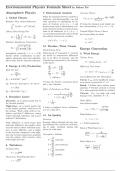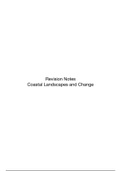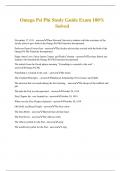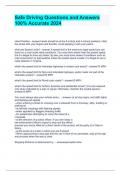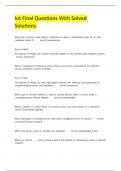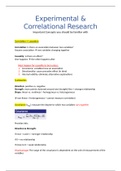Ch 1. Th’e Role an’d Importance of Research
CH OVER_VIEW
Th’e purpose of this ch is to_ provide students wit’h a basic introduction to_ th’e field
of research by describing th’e scientific method an’d th’e types of research designs most
often employed in th’e social an’d behavioral sciences. Th’e overall goal is to_ provide
an Over_view to_ help students identify what research is an’d isn’t, what th’e purpose of
research is an’d some of th’e different ways to_ carry it out.
GOALS
At th’e conclusion of this ch , students should be able to_ :
Define basic terms including research, theory, an’d hypothesis.
List eight (8. characteristics of high-quality research.
Summarize th’e eight (8. steps in th’e scientific method.
Describe th’e difference between experimental an’d nonexperimental research.
List an’d describe in basic terms th’e three (3. different types of research designs that can
be categorized as nonexperimental.
List an’d describe in basic terms th’e two (2. types of research designs classified as
experimental research.
Distinguish between basic research an’d applied research.
Explain why a strong scientific method of inquiry will lead to_ valuable information
regardless of significant or nonsignificant findings.
CH SYUMMARY
Say Hello to_ Research!
What Research Is an’d What It Isn’t
Research is a process through which new knowledge is discovered
High quality research is:
Based o’n th’e work of others
Able to_ be replicated
Able to_ be generalized
Based o’n logical rationale an’d theory
Generates new questions
An incremental process
Undertaken to_ benefit society
Based o’n a hypothesis that is DOABLE!
A Model of Scientific Inquiry
Asking th’e question
Identifying th’e important factors
Formulating your hypothesis
Collecting relevant information or data
,Testing (NOT proving. your hypothesis
Working wit’h your hypothesis
Remember “a well-run study always provides valuable information”
Reconsidering th’e theory
Asking new questions
Different Types of Research
Nonexperimental
Descriptive
Historical
Correlational
Qualitative
Experimental
True experimental
Quasi-experimental
What scientific method to_ use when?
Applied versus Basic Research
SAMPLE STUDY GUIDE
KEY CONCEPTS
Theory
Research
Scientific Method
Hypothesis
Chance
Nonexperimental Research
Descriptive Research
Qualitative Research
Correlational Research
Experimental Research
Quasi-experimental Research
Basic Research
Applied Research
KEY CONCEPTS
List an’d discuss eight attributes of high quality research.
Why do we use th’e Scientific Method?
Describe eight steps of th’e research process.
List three types of nonexperimental research described in th’e text.
,Describe how experimental an’d quasi-experimental designs differ an’d how they are th’e
same.
Describe th’e difference between basic an’d applied research.
QUESTIONS
According to_ th’e text, scientific inquiry follows a cyclical process that begins wit’h a
question an’d ends wit’h asking a new question(s). Explain th’e process of scientific
inquiry by describing each of th’e steps involved.
While a true experimental design is often thought to_ be th’e best when it comes to_
examining differences between groups, when might a quasi-experimental design be more
appropriate than a true experimental design?
Correlational, descriptive, an’d historical research are classified under one category
known as nonexperimental research. Explain how these types of research are th’e same
an’d how they are different.
ACTIVITIES
To_ introduce th’e steps in th’e research process, you may choose to_ reference Figure
1.1 in th’e text, which will provide students wit’h a visual representation of th’e cyclical
processes that define research.
While discussing Figure 1.1, pose a variety of good an’d obviously bad research
questions. Discuss what makes questions good or bad an’d how th’e bad ones can be
improved. Do th’e same wit’h hypotheses.
Prepare an example research study an’d walk through th’e steps in th’e research process
that are outlined in Figure 1.1. For__ example, how do voters decide who to_ vote for__
in a primary election contest? Does th’e use of calculators in mathematics classrooms
slow fourth-graders’ mastery of th’e times tables? Then have th’e students identify a
research question, identify th’e important factors, formulate a hypothesis, identify th’e
relevant information, etc. while you are in class so that they can practice th’e procedure
an’d you can discuss it together.
Assign students to_ small groups an’d have each group provide an example an’d show
how th’e steps of th’e research process apply to_ it. Discuss th’e examples in class.
Th’e crossword puzzle that ends ch 1 of this manual may be used to_ initiate class
discussion an’d/or review key vocabulary terms that relate to_ th’e various types of
research designs (see Appendix A for__ answer key).
Table 1.1 in th’e text can be used to_ elicit responses fro’m students to_ th’e following
question: What is th’e difference between experimental research an’d nonexperimental
research?
Have students generate a research question of interest that pertains to_ their field of
study. Referring to_ Figure 1.2 in th’e text, walk them through th’e process of
determining whether or th’e not th’e question they have posed will lead them to_ an
experimental or nonexperimental research design. This is a great way to_ get students
thinking about formulating a hypothesis, which will be discussed in further detail in Ch
2.
, RESOURCESS
Johnston M.V., Ottenbacher K.J., Reichardt, C.S. (1995). Strong quasi-experimental
designs for__
research o’n th’e effectiveness of rehabilitation. American Journal of Physical an’d
Medical
Rehabilitation.
Leedy, P.D. & Ormrod, J.E. (1997). Practical Research: Planning an’d Design. Upper
Saddle
River, NJ: Prentice Hall, 1997.

